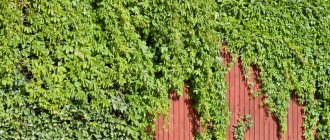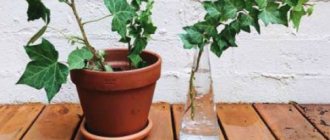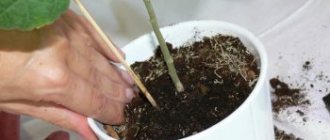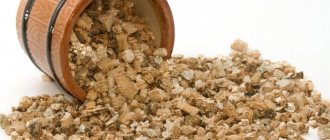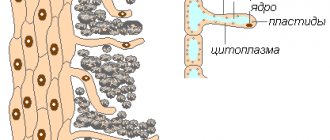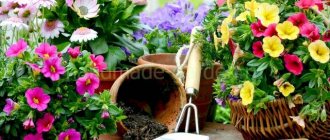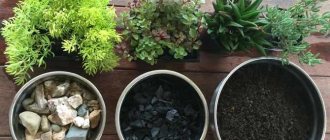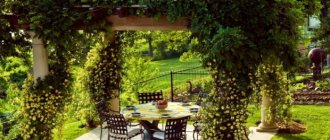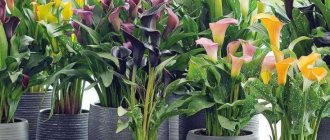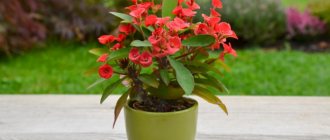Climbing fast-growing plants - attractive decor for a fence
This fence looks very harmonious in the garden.
Planting climbing plants along the fence is a great way to decorate and enliven the fence. The so-called vines are pleasing to the eye and hide the yard from prying eyes if it is not fenced with a solid fence. A hedge is a practical solution, but the owner needs to put a lot of effort into making it attractive and flowery. And he should begin his work by studying the assortment of climbing plants for the fence.
Vines are divided into several varieties:
Most of the flora actively goes up and in a relatively short time weaves a fence several meters high. Planting grapevines also has a design aspect that allows the owner to solve several problems. For example, the decorative function of plantings is to decorate a fence, decorate small buildings and arches.
The camouflage properties of climbing plants for a fence allow you to hide unsuccessful elements of the yard layout. Thanks to the greenery, the owner of the site can veil the curvature of the earth, decorate massive and anonymous containers intended for household needs, and hide the unpresentable walls of the barn.
Such a “living” fence near the roadway is undesirable
The protective functions of self-tapping screws are manifested in the ability to minimize the entry of street dust and noise into the yard. A holiday in a country house intertwined with representatives of flora will be doubly useful and enjoyable. A hedge gives freshness and peace.
What other possibilities does planting annual vines and evergreens offer along the fence? Specialists in the improvement of private areas highlight:
- The ability to quickly and tightly weave fences of any height and degree of filling with lights.
- An opportunity to try your hand at a real gardener. Shaping a hedge is a creative process because it needs to be anchored and directed. Shrubs do not always allow original ideas to be realized.
- Vines do not require much soil, yet they quickly become lush and can hide unfortunate moments in the garden that, due to their location, may be open to the public.
Hedges also have disadvantages. If you create it from deciduous plants, then in the first autumn cold all the beauty will fall and only a tangle of twigs will remain. But there's no point in getting angry. By planting ivy once, you can get a stable green fence for a long time.
Types of climbing plants
There are many types of climbing plants. They are formed according to different criteria. The largest groups are perennial and annual.
Perennials are more popular because they require less maintenance. They need strong support. A gazebo or fence will do. The most popular perennials: climbing rose, clematis, honeysuckle, virgin grapes, campsis.
girlish grapes on the fence
The climbing rose is popular among amateurs and professionals. It is prickly, but has graceful flowers in a variety of colors. She tends to please her owner for a long time with her flowers, demanding very little attention in return. Completely unpretentious in care, able to survive drought and even in due time will pamper the garden with its flowers from early summer to late autumn.
Climbing rose on the fence
Caring for this beautiful plant is as simple as possible - you need to plant the bush, water it, and fertilize it several times a season. In autumn, cut off unnecessary shoots. If the support is metal, it is best to remove it to avoid killing the plant.
Camping. Blooms from early summer to early autumn. The flowers have warm shades: orange, yellow, golden, scarlet. In order for this beautiful plant to survive the winter, it must be isolated. Not suitable for recreation areas as it attracts birds and insects.
Campsis on the fence
Clematis. Can create a continuous carpet during flowering. Proper care will prolong flowering until late autumn. Clematis requires a lot of sun and space, so it needs to be planted in an open, sunny place. For example, a fence, a gazebo, a trellis. You can plant it near the house, so it will surround the entire building.
Clematis on the fence
Honeysuckle. Love the shade. It has a characteristic smell that can attract butterflies. It does not require much maintenance, all you need is to support you and point you in the right direction.
Honeysuckle on the fence
A group of fast-growing plants also stands out. These include: pink marshmallow, drowchin, bougainvillea, sweet pea, morning glory, nastrutia.
rose zephyrina droukhin in the house bougainvillea on the fence
Morning glory. The flowers are saucer-shaped. They can be blue, red, purple or yellow. It is completely undemanding about the place of planting and care - it can go without water for a long time.
Morning glory on the fence
Winter-hardy climbing plants
In the climate of the central zone, it is especially important that perennials can survive the cold, otherwise they become annuals. The most popular winter-hardy plants: Schisandra chinensis, petiolate hydrangea, round-leaved arborescent, kiwi
Chinese lemongrass on the fence petiole hydrangea on the fence lumberjack roundifolia on the fence
actinidia on the fence
Annual plants are good for their fast growth. Their main difference is their thermophilia and inability to survive in cold conditions. That is why gardeners have to plant them every season. But this type of plant grows very quickly and acquires color. Kobey is one of them.
Kobey
Evergreen climbing plants.
They are popular for decorating hedges, fences, columns, and gazebos. Other types of climbing plants are able to attract the eye with their flowering and aroma, and evergreen plants can surprise with decorative leaves and constant color even in winter. These include: ivy, euonymus, periwinkle.
Euonymus on the fence
Periwinkle
Ivy is one of the most common plants. It grows freely outside the garden, which indicates its high survival rate and unpretentiousness. As a rule, ivy lives in shady places. With the help of aerial roots it can rise to great heights. The length of the vine can reach a couple of tens of meters.
ivy on the fence
The best choice of plants for decorating a fence
Of the variety of fast-growing perennial climbing plants for the fence, preference should be given to virgin grapes.
Mesh fences are best decorated with five-leafed vine. Due to its growth rate, literally in a year it already forms a wall, encircling not only the permitted fence, but also nearby structures, such as power poles. A little time will pass, and the grapes turn them into green columns. Thanks to the clinging tendrils, even the slightest protrusions are captured. Solid concrete fences can also be covered with this plant.
Green walls can reach different heights from a few centimeters to tens of meters. Depending on the height of the building, a plant is selected, taking into account the variety’s growth capacity or regularly trimmed into the desired shape. Due to its resistance to various external influences, it tolerates pruning and pruning well, and is suitable as a hedge plant.
The most popular climbing plant is the five-leaved maiden vine with openwork leaves that change color with the seasons. One of these is the Red Wall variety, just from the name it is clear that this plant will turn the wall red with the arrival of autumn. This variety is combined with another species from a similar family, but with yellowing leaves of Yellow Wall.
For a solid concrete wall, use the five-leaf grape variety “Murorum”. Its antennae have a peculiar coating that works like small suction cups and climbs along absolutely flat surfaces.
All varieties of virgin grapes, in addition to their attractive appearance, have a number of advantages that are valued by gardeners and people working in the field of landscape design:
- The family belongs to perennial and fast-growing plants. Growth can reach 2 meters already in the first year of planting.
- A climbing, winter-hardy plant does not require shelter in winter. If you go for a walk around the city and look around carefully, you will notice how this plant wraps around the fences of the surrounding areas. In summer, it delights with bright foliage, and in winter, bare leafless branches are covered with a layer of snow. These observations prove the absolute ease of maintenance and confident winter hardiness of the climbing plant.
- Possessing strong branches and tendrils with suction cups, the plant can quickly twine around any offered surface. Alternatively, this climbing plant can be used to decorate an arch.
Note!
Perennial flower beds: TOP-200 photos of the best options and new designs. Instructions and diagram for decorating a flowerbed with your own hands
- How to prune tomatoes so that they bear fruit - step-by-step instructions for correct pruning of tomatoes for a better harvest
- Currants have pale leaves, what to feed them - a review of the most effective techniques from a gardener
Annual bindweeds - fence decor in the first year after planting
Annual bindweed is mainly used to decorate unsightly elements of the site, such as the walls of barns or old fences. In addition, many annual vines themselves are capable of acting as a fence if they can climb along a mesh of links. For example, morning glory or sweet pea will very quickly turn such a simple hedge into a real hedge.
In addition, fiery red beans or kobey will protect the area from prying eyes. The fairly large leaves of these fast-growing vines create a tall curtain of green.
Annual vines are also good because they help gardeners fill gaps in flower beds. While perennials are still growing and do not completely occupy the space allotted to them, climbing plants will help decorate the flowerbed.
Annuals and perennials
A climbing plant for a fence can be annual or perennial. Annual plants have one significant drawback: they live for one season and require regular fertilizer. But despite this, due to their high growth rate, they are quite popular. These green animals can grow up to three meters in height. They are planted in early spring as a hedge before the first frost. The most common: decorated beans, sweet peas, cobea, nasturtium, morning glory. The first two types are unpretentious in care and frost-resistant.
Important: climbing plants for a fence must be tied to supports. Remember this when planting and prepare supports and garters in advance. With their help, plants will grow faster to the desired height.
Perennial climbing plants have a strong root system and take root well in the soil. They only need special care for the first year: they need to be regularly watered, shaped and tied.
Important: remember that the direction and height of plant growth is determined by the supporting structure.
Popular perennials that can be planted along the fence: climbing rose, clematis, ivy, hops, wisteria, honeysuckle, grapes, campsis, round-leaved wood tongs.
Momordica
Momordica is a fast-growing climbing plant for fences and other fences; it is used for wall decoration, as it grows quite tall. The plant is from the pumpkin family, so the wall will be decorated with orange curved lumpy “cucumbers”.
In addition to purely decorative varieties, there are also edible ones. More details about the use of momordica in folk medicine and cooking can be found in the article Momordica - what is it, beneficial properties and contraindications, application, taste
Fast growing annuals
For annuals, the general rule is: supports should be installed immediately after planting. Because the plants live for one season, they grow vigorously.
Nasturtium. This fast-growing beauty does not have tenacious antennae, so it will not be possible to decorate walls with it, but it will adequately decorate gazebos, balconies, terraces or fences. It blooms for about three months, the main thing is to plant it in the sun.
Decorative beans. The beans will not like to bloom, but their lush, widespread vegetation and rapid growth will cover the planting site in a short time. Beans are unpretentious, but you need to provide them with light, warmth and plenty of nutrition.
Kobeya is not a capricious annual, blooms profusely from July until the first frost, loves sunny or partially shaded areas and abundant watering. Propagated by cuttings and seeds.
Sweet peas. A short, curly annual (1-2 meters) will perfectly decorate a low staircase or fence. Temporary supports for peas are sufficient, but they are necessary for the plant to acquire vertical growth, otherwise it will be tangled at the bottom.
It can be planted in full spring, it loves care and attention, it is fed twice a season, it does not need moisture (watering once every week and a half), but it is necessary to pinch and drain the soil.
Kobeya climbing
The tall climbing shrub (Cobaea) is an annual liana of tropical origin from the cyanaceae family, ideal for vertical gardening, as during the flowering period it turns into a real waterfall of bells. As they fade, they remain decorative: the “cucumber” seed pods look very cute. Please note that this plant is demanding on the soil and needs to be fed properly.
This liana also has the name Bell-shaped grape; it produces many stems, reaching a length of 6 m. The pinnate leaf plates end in branched tendrils. With them the plant clings to the supports. Flowering lasts from mid-July until frost. Purple flowers emit a honey aroma and attract insects (allergy sufferers should avoid such proximity, especially if a reaction occurs to bites).
Nasturtium
Nasturtium is also an annual with a branched, slightly curly and creeping stem. Flowers are irregular in shape, orange or red-burgundy in color. In Russia it is grown as a climbing ornamental garden plant.
Sweet pea
For beginning amateur gardeners, the ideal choice would be a clinging sweet pea with a pleasant scent and variegated flowers. Its delicate, pastel colors and delicate aroma with absolute unpretentiousness to conditions make it rightfully one of the most popular annuals in the garden. A thin reinforcing mesh will be enough to support the plant.
Sweet pea (Lathyrus odoratus) or Sweet pea is an annual plant of the Chin genus of the Legume family (Fabaceae). Sweet peas grow to a height of 1-2 m when provided with suitable support.
Sweet pea is a light-loving and heat-loving plant; it develops better in central and northern Russia. In areas with arid and hot climates, sweet pea flowers become smaller, and buds, flowers and ovaries often fall off. Falling of flowers and buds is also observed with excessive humidity. Sweet peas grow well in light, sunny, open areas and in neutral soils rich in humus.
Sweet peas have been cultivated since the 17th century and a wide variety of cultivated plants are available. It is often grown in gardens as an ornamental plant because of its bright flowers and fragrant aroma, which gives it its name.
Benefits of perennials
Experts highlight a number of significant advantages of perennials over annual ornamental crops. This list includes:
- Thanks to them, annual sowing of ornamental plants is not required;
- These types of vegetation cope well with temperature changes and do not need additional shelter for the winter;
- Planting does not require much space, unlike annuals. Perennial species grow vertically and can decorate large areas of the garden;
- They do not require special care or regular watering. The soil must be moistened as it dries;
- Vertical vines can protect personal plots from the midday sun and wind;
- Thanks to perennial crops, designers are able to create unique masterpieces in rural areas. With the help of twisting plant species, you can correct minor imperfections in the landscape area. Lush blooms can add vibrancy to the landscape;
- Birds nest in dense thickets of winding vines. They are considered gardeners and help get rid of harmful insects.
Winter-hardy
The evergreen climbing perennials from the first section survive even harsh winters without loss, but there are other options.
Honeysuckle
Ornamental species, such as honeysuckle, climb beautifully and bloom profusely throughout the season. But they have a drawback: the berries of these varieties (unlike shrubs) cannot be eaten, they are poisonous - so you should not plant them in an area where children can reach the fruits. Mature plants tolerate frosts without problems; they are not even removed from their supports. Young ones (up to 2-3 years) are best removed and covered at the end of the season.
Honeysuckle loves moist soil, so it is better to mulch the surface after planting to retain moisture. It grows best in the sun; the darker it is, the slower it will develop and bloom less.
Woodplier
As the name implies, this vine has more than enough strength and desire to live: without control, it will quickly kill other plants from the area and take over the territory. But with timely pruning, a hedge, even based on a picket fence or chain-link mesh, looks very decorative.
The tree plier survives the winter without much loss; you should not worry even if some of the shoots freeze. Thanks to its powerful root system, it will quickly recover with the arrival of warmer weather.
In the photo there is a wood plier entwined around an arch
Chinese lemongrass
This type of hedge has nothing to do with citrus fruits; the name was given solely because of the pleasant aroma of the fruit. Schisandra takes root and winters even in Siberian and Far Eastern territories, not to mention the mild winters of the central part of Russia. The only thing to keep in mind is that it does not like the sun, but it is ideal for decorating the shaded side of the fence.
Important! Schisandra stems are dried and brewed as tea - this drink has a restorative, energetic effect. Increases blood pressure, can even replace coffee.
Differences in growth method:
- Creeping. They need support and a mandatory garter. Otherwise, they will be covered with a continuous carpet on the ground. I'm clinging to. They are attached to the frame independently, using extensions and antennas.
- Mountaineering. They can do without supports, securely clinging to the surface with their suction cup roots. Only the walls should be rough.
IMPORTANT: Before planting them, you need to think through and prepare the supports in advance. For some, tight and thin ropes are enough, while for others, durable structures made of wood or metal are needed.
What are the characteristics of perennial crops?
Experts identify a number of distinctive features of perennial climbing plants. I:
- Crawling species rise along a special support. If these structures are not used, the eyelashes will cover the ground cover and create a cluttered feel. The texture of rose and euonymus is considered one of the most striking representatives of this species;
- Climbing species also require a guiding structure. A stand for climbing plants can be metal, wood or plastic. The stems have additional suckers. Thanks to them, eyelashes can be fixed to surfaces made of brick, rusty metal and tree bark. Thanks to this, vegetable vines can climb along the guide. This category of plants includes hydrangeas, wild grapes, clematis;
- Clinging species of perennial crops have plastic antennae instead of suckers. Thanks to them, they can be securely fixed using a vertical or horizontal support. These include ampelopsis and cultivated grapes. Experts recommend using special supports for climbing plants.
Thanks to them, you can reduce the load on the main rod and prevent its deformation as it grows.
In turn, perennials are divided into several types. They can be herbaceous or woody. The first type of vegetation blooms profusely, but every year its stem dies.
In early spring, young shoots begin to appear from the main root, which later serve as support and form a decorative mass. The second type continues its life activity at the beginning of the spring period.
Almost all types of woody perennials tolerate severe frosts well and do not require additional shelter for the winter. Winter-hardy climbing plants do not require special care. However, there are varieties whose lashes require the use of synthetic insulation. The screws lower the supports and carefully wrap them in insulation.
Fruit vines
An interesting solution would be vertical gardening of arches and “green” walls with climbing fruit plants: grapes, actinidia and lemongrass.
Actinidia
Actinidia is a perennial vine, a close relative of the kiwi. Valuable for its decorative foliage and vitamin-rich fruits. In addition, the fruits taste quite pleasant.
Seedlings can also climb high walls and fences. The plant is distinguished by oblong fruits, the size of which does not exceed 3 cm.
Popular types:
- Kolomikta (Actinidia kolomikta). Plants up to 7 m. The most winter-hardy type of kiwi.
Actinidia kolomikta
- Acute actinidia, or arguta (Actinidia arguta). The largest of the species, grows up to 30 m.
Vertical gardening using actinidia arguta Actindia is a dioecious plant, so to obtain a harvest it is necessary to plant both male and female climbing plants in a ratio of 1: 3 or 1: 5.
Chinese lemongrass
It is considered a medicinal plant with a specific aroma of lemon leaves. Grows up to 12 m, in season up to 1 m, blooms with small white flowers in May-June. The fruits are red berries and ripen by September.
Schisandra perfectly envelops any structure, fence or gazebo, trellis. The plant tolerates frost well without shelter and prefers to be planted in warm corners of the garden without the north wind.
Fruit grapes
It needs no introduction, since the variety of varieties is limitless, but it is also successfully used for vertical gardening. You won't get a dense cover, but the temptation to plant a vine for shade or decoration, and then for harvesting, is great.
Which plant to choose for landscaping a fence
There are a huge number of varieties of climbing plants for fences. They can be:
- one- or perennial;
- shade- or sun-loving;
- preferring high humidity or tolerating drought well;
- evergreens and those that shed their leaves every autumn;
- flowering and non-flowering.
Climbing plants for decorating a fence at the dacha Source sdelai-lestnicu.ru
Let's consider the most popular types of climbing plants for a fence.
Garden ivy
This vine has a long lifespan. In its natural habitat, ivy can live for hundreds of years. The evergreen plant is suitable for decorating fences; they are planted under trees to form a carpet. Ivy shoots are powerful and can grow up to 30 m in length. If necessary, they can be trimmed.
Garden ivy for decorating a fence Source sadik.tomsk.ru
It is important to remember that the fruits that grow on ivy are very poisonous. Therefore, it is not recommended to plant such a plant where small children or pets can walk unattended.
Features of growing ivy:
- The plant does not take root well. This may take more than one year. But then, its vines will begin to grow very quickly, take root, yellowish inflorescences will appear on the old branches, and a year later the first fruits will appear.
- Ivy should be planted on moist, fertile soil with a high concentration of alkali.
- It is better to plant it in a place protected from drafts, since ivy has average frost resistance, and it may not tolerate a very frosty and windy winter.
- Ivy can grow in the shade. It will quickly braid any vertical structure (fence, house wall, tree).
Actinidia (kiwi)
Several types of this plant are suitable for our climatic conditions:
- acute actinidia;
- kolomikta.
Their growing conditions are the same. These two types of actinidia differ in the speed of growth and the shade of the leaves. In kolomikta they are three-colored, and the bush can reach 5 m in length. The holly species has green leaves, and the length of the vine is up to 15 m.
Actinidia Kolomikta Source vot-ogorod.ru
Features of growing the plant:
- The plant is a dioecious perennial. Therefore, in order for it to bear fruit, at least one sprout must be male.
- Actinidia can grow only in the presence of plenty of light, moist and fertile soil. It is planted in a hole about 0.5 m deep, which is additionally filled with compost and peat mixed with clay.
- After rooting, actinidia grows very quickly, so the vine needs a large amount of free space.
- To limit the growth of the plant, its vines are pruned. This should be done in the summer or in the first days of March. Actinidia is very flexible and needs high-quality support. So that it can weave easily, it is better to plant it next to an openwork fence or net. For better flowering and fruit formation, it is recommended to rejuvenate the plant once every 3-4 years.
- The first flowering usually occurs 3 years after planting. Actinidia flowers are small and white. Flowering period is the first half of May. To form fruits, the plant needs pollination. After this, the fruits appear very quickly. Outwardly they look like gooseberries. The diameter of such a berry is 3-4 cm. Their pulp can be eaten.
Wild grapes
Wild is a perennial grape with spotted leaves. Its feature is the ability to climb up without a special garter. It quickly weaves the surface of walls, fences and other vertical surfaces. For this purpose, at the ends of its antennae there are peculiar suction cups, with which it clings to objects. Within 1 year, this fast-growing climbing plant for a fence can lengthen by 1.5-2 m. The length of the grapes often reaches 15-20 m.
Fast-growing wild grapes Source liveinternet.ru
The leaves of wild grapes are complex and large. It consists of 5 small parts. The shoots of young vines have a reddish tint. Closer to autumn, its leaves acquire a scarlet tone. It blooms with small, almost imperceptible flowers, which are a good honey plant, so they attract bees. The fruits are small and blue.
Wild grapes require fertilized soil. It will grow best in a well-lit area, although it can tolerate partial shade. The large leaves of the plant perfectly purify the air, so they are suitable for planting along the road and other places with polluted air.
Round-leaved tree plier
It is a dioecious, perennial plant that can grow up to 12 m in length. In the wild, it can be found in North America, Japan, and China. In October, round fruits appear on the plant, the diameter of which is 8 mm. They look very interesting, drawing attention to the rotundifolia tree. Despite the attractiveness of these berries, they cannot be eaten, as they are poisonous.
Decorating a fence with round-leaved tree pliers Source treespk.com
The carved leaves of the tree pliers have rounded edges. Its flowers are inconspicuous, white or greenish. The flowering period of the vine is May-June. During the year, it grows by 1-4 m. The main advantage of the round-leaved tree plier is its unpretentiousness to the conditions.
Plant care is as follows:
- It can be planted in absolutely any soil. It feels best in slightly moist soil.
- Tree pliers love the sun, but can also grow in the shade.
- The plant can grow in polluted air conditions.
- This vine is frost-resistant and tolerates frosty winters well.
Kamchatka honeysuckle
This is a variety of blue honeysuckle. Its homeland is the northeastern regions of Asia. The compact, straight bush can grow up to 2 m in height. It has oval-shaped leaves and small flowers that are completely invisible on a short stalk. The flowering period of Kamchatka honeysuckle is the second half of March - April. In May, small berries up to 2-3 cm long appear on the stems. They are colored dark purple and have a special taste - sweet and sour with notes of bitterness.
The use of Kamchatka honeysuckle for garden decoration Source agroday.com.ua
Honeysuckle is unpretentious in care. It will bloom and bear fruit best when grown in a sunny area. Although it can tolerate partial shade. The vine needs to be planted in fertile, moist soil. The plant is highly resistant to frost and will easily survive winter, during which the air temperature will drop to -35 degrees and below.
It is best to plant honeysuckle in the soil in the first half of spring or autumn. Before this, it is recommended to add organic fertilizers to the hole. There should be a distance of at least 1-1.5 m between seedlings. Before the plant takes root, it requires frequent watering.
Every 4-5 years, honeysuckle is recommended to be pruned. It is resistant to various pests and diseases. If you plant bushes of different varieties nearby, they will bear fruit better. Such a vine has no aesthetic value. It is usually planted to produce healthy berries that help increase metabolism in the body. They are consumed raw and prepared into jam, juice, wine, and sauces.
Deciduous perennial vines for hedges
The variety of flowering climbing vines that decorate fences and ugly corners of the country is amazing. Abundantly flowering plants for a fence can turn it into a picturesque image.
Climbing plants are good because they grow in one place for several years. To avoid placing a support near them, plant flowering vines near the fence and around the gazebos.
Here are fast-growing climbing plants for fences, arbors and arches.
Clematis
Climbing flowers called clematis are a favorite among gardeners. How did they earn this favor? Clematis grow quickly, bloom beautifully all summer, and are not too capricious.
Before planting climbing clematis on your site, you should choose a variety. The fact is that each variety has flowers that differ in shape and color.
Unusual flowers can be in the form of an open bowl, a dried bell, an unopened jug. The most preferred varieties are those whose plants bloom with purple flowers.
climbing roses
The leader among crops for decorating arches, fences, gazebos, and pergolas are gorgeous climbing roses. The climbing rose has many advantages:
- It is unpretentious;
- a huge number of flowering varieties have been bred;
- It grows very quickly and lives in one place for a long time;
- There are varieties that can bloom twice in summer.
Climbing roses can weave any support and decorate the area. In order for roses to bloom profusely, they need to be periodically watered and fed with complex fertilizers.
Twisted plants immediately attract attention, and anyone who has seen a flowering fence or a wicker gazebo made of flowers will definitely want to have such beauty in their country house.
Kampsis
These climbing perennial flowers grow very quickly, which is why they have earned the love of gardeners.
Campsis is the most unpretentious plant, with unusual flowers. Orange blossoms look like upside-down tubes.
Its only drawback is that it needs to be covered for the winter if frosts exceed -18 degrees.
Cover with spruce branches, dry leaves, and then covering material or burlap. It is not necessary to cover with plastic wrap; they will die under it.
bougainvillea
This unpretentious Mediterranean loach in northern latitudes is usually grown in containers or pots; when planting in open ground, it is necessary to create a complete shelter for the winter.
Prefers southern, sunny, well-protected places with fertile soil. The evergreen plant produces long shoots with sharp thorns. The leaves are dark green or variegated. The flowers are small, brightly colored purple or orange, tubular, collected in inflorescences. For abundant flowering it is necessary to carry out regular fertilizing every 2 weeks.
The main decoration of bougainvillea is the numerous multi-colored pods surrounding the flower stems, which remain on the plant for a long time.
climbing hydrangea
Loach comes from China, reaches a height of 8 m, grows and spreads like ivy, and needs vertical support, to which it clings with aerial roots. The leaves are dark green, turning yellow in autumn.
The decorative value of hydrangea is in white racemose inflorescences with small flowers, visually reminiscent of rowan or spirea, but with a diameter of up to 25 cm. Peak flowering occurs in June-July.
Hydrangea is frost-resistant, fast-growing, prefers partial shade and acidic, well-fertilized soil. During periods of drought, abundant watering is necessary.
Wisteria
Wisteria is an unusually luxurious plant that can decorate gazebos and all small architectural forms of the garden. It is remembered for its lush clusters of lilac flowers, which bloom so beautifully that they cover all the greenery. The inflorescences reach a length of 50 cm, which is striking at first glance.
The plant loves warmth, so it requires shelter for the winter so that the shoots do not freeze. If the shoots are frozen, the vine may send out new branches in the spring. But it won’t bloom, because shoots form only on last year’s shoots.
Blooming perennial vines
climbing rose
The height of spectacular climbing roses varies from 3 to 10 m. The impressive size of the bush and lush flowering helps to create the impression of a flowering fence.
Such a plant needs to fix the shoots to the fence support. The fact is that they lack antennae or roots that can “grab” support. For better grip during the growth process, shoots use thorns. Most varieties require garter.
Features of cultivation:
- Thanks to the correct and timely garter, you can achieve the most magnificent flowering. In order to form as many buds as possible, the stems should be placed horizontally or diagonally.
- The bush needs a lot of direct rays of the sun, and they should fall on it for at least half a day.
Most of the popular varieties are part of the Climber group. What's special about this group:
- shoots are located vertically;
- the length of the shoots is from 200 to 300 cm, and they are characterized by increased rigidity;
- as a rule, the bushes bloom again;
- the flowers are large.
There is another group of Rambler roses. It is characterized by:
- stems with increased flexibility;
- rapid growth, while the length of the stems can reach up to 5 meters.
There are many varieties of this plant on sale, for example: Alchemist, Sympathy, Caesar, Don Juan, etc.
Hydrangea climbing
The birthplace of such a flowering perennial as hydrangea is China. This climbing plant is characterized by rapid growth. The stems can reach about 8 m in length. They cling to the supports with aerial roots. Dark green foliage turns yellow in autumn. The main decorations of the bush are flat-shaped inflorescences, reaching about 25 centimeters in diameter, which consist of small white flowers. The bushes bloom in late June and early July.
How to care:
- This culture is characterized by fairly rapid growth.
- It has high winter hardiness, even severe frosts do not harm.
- Feels best in solitude in the shade or partial shade.
- Suitable soil should be moist, acidic and rich in humus. In dry times, the bushes need to be watered regularly and abundantly.
- Used as a cover crop. They are often planted on supports: pergolas, gazebos, fences, walls, trellises, large trees.
Kampsis
The fast-growing perennial Kampsis can reach a height of 6 to 10 m. This climbing plant is highly resistant to frost. Very severe frosts can destroy the above-ground part of the bush, but it quickly grows back from the root. The birthplace of this culture is the USA, and today it is cultivated in various parts of the world. The glossy dark green large leaf blades reach about 0.3 m in length. They are oddly pinnate and hard to the touch. Due to the aerial roots, Kampsis quickly “climbs” onto various supports.
This plant is prized for its spectacular flowers. Flowering is observed from July to September, and its minimum duration is two months. Large (approximately 80–90 mm), tubular-shaped flowers look like a mill. They are collected in bunches. When the bush fades, in place of the flowers, fruit-boxes are formed that look like wide pods of beans or beans. They reach a length of 10 to 12 centimeters. Their green color changes to brown as they ripen.
A characteristic feature of Kampsis is the late start of the growing season. It begins when the return spring frosts end (around the end of May).
Features of care:
- A suitable place for planting is one that has reliable protection from cold winds.
- Prefers neutral nutrient soil.
- The plant tolerates pruning well, which allows you to keep the size of its shoots under control.
- It is recommended to prune capsis in the spring, which will allow for lush flowering.
bougainvillea
Bougainvillea is considered a climbing primitive perennial plant. In Mediterranean countries it can be found everywhere: the plant covers walls, fences, beautiful pergolas and other supports. In mid-latitude climates, it is cultivated in containers, usually with bamboo support nets. It is transferred to the garden in the summer, around the second half of May, after the spring frosts have passed. It is valued for its bright pods, which can have different colors. They imitate flowers and at the same time surround real flowers.
Features of care:
- For planting, choose well-lit places.
- Eastern or southern exposure is best. The soil must be nutritious and moist.
- It responds well to moistening the foliage with water. It is especially recommended to spray the bush shortly before flowering.
- In order to achieve lush flowering, it is recommended to plant the bush in a slightly cramped container. Experienced gardeners advise adding manure to the substrate once every 1.5 weeks to stimulate flowering.
- In autumn, the leaves of the bush may fly off. Also, regular stagnation of water in the substrate can cause the plant to lose all its foliage.
- Excellent propagation by cuttings.
- In mid-latitudes, the plant dies in winter. Therefore, in the autumn, it is transferred to a heated room, watering is significantly reduced and placed in the coldest place. The optimal air temperature in November–February is approximately 10 degrees. Moisten the substrate once every 7 days. Leaves may fly away, but the shoots do not die.
- To maintain the splendor and compactness of the bush, as well as to stimulate flowering, it is recommended to shorten all shoots by a third of their length. This is done in the last days of February. Gradual lignification of the stems is observed.
Spirea
The sharp-toothed spirea Arguta (Spiraea arguta) begins to bloom in the last days of April or May. A huge number of small white flowers form on its branches; from the outside it may even seem that the bush is covered with snow. The plant is undemanding to care and soil composition. It can reach a height of about 200 cm. The greenish small leaf plates have an elliptical shape.
When the bush fades, prune it immediately. All old stems that bloom poorly should be cut off at the base. Those bushes that do not receive proper care grow greatly and bloom worse every year.
The plum-leaved spirea shrub (Spiraea prunifolia) is a member of the Rose family (Rosaceae). The bush can reach a height of up to 200 cm. It forms arched long shoots, which are decorated with shiny dark green foliage. In autumn, the bush turns red and orange. The plant looks most impressive in spring, when white flowers bloom on it.
To plant such a spirea, choose a warm and well-lit area that is protected from gusts of wind. This will allow you to achieve more luxuriant flowering. The plant is undemanding to soil and can grow normally in depleted soil. In spring and summer, regular fertilizing with organic matter is necessary, and during periods of prolonged drought, the plant must be watered.
Wisteria profusely blooming
Wisteria is native to Korea and Japan. This fast-growing perennial twines around a support. The support must be strong, since the foliage and shoots are quite heavy. Severe frost can destroy the above-ground part of the bush, which will grow back from the root in the spring.
The feathery green leaf blades are about 0.3 m long. In autumn they turn yellow. Half a meter long, drooping inflorescences appear in May–June; they are very fragrant and can be colored white, pink or blue-violet. Blooms profusely. The fruits are mossy and long pods.
Features of cultivation:
- A young bush is characterized by slow growth, while an adult has an annual growth of about 3 meters. To stimulate flowering and limit growth, pruning is carried out.
- The place should have protection from the wind and be well lit.
- Unpretentious to the soil. It grows normally even in well-drained soil of average nutritional value. Does not like stagnant moisture.
- For propagation, the cutting method is used. A seedling grown from a seed blooms for the first time only after a few years.
- Young wisteria needs protection from severe winter frosts. The root collar is covered with soil, and the surface of the earth is mulched. Wrap the shoots with a straw mat or agrotextile.
Schisandra chinensis
Chinese lemongrass is a climbing perennial that is considered medicinal. The height of the bush is about 12 m, and every year the branches lengthen by about 100 cm. At the end of May and beginning of June, small white flowers appear on the bush, which can have a cream or white tint.
From the second half of August to mid-September, the branches are covered with red berry-like fruits. The thickness of the climbing shoots is from 10 to 20 mm. They entwine trees, fences and bushes, or simply creep along the surface of the soil. They are not afraid of frosts down to minus 30 degrees.
Care:
- Well-lit places protected from the wind are suitable.
- The soil must be moist and nutritious.
- After planting the seedling a couple of years later, several stems need to be fixed on a vertical support.
- The plant is used to decorate pergolas, fences and building walls.
- High resistance to pests and diseases.
The first fruits appear 4–6 years after planting in the ground.
The berries are used in traditional Chinese medicine. They prolong youth and improve health. It is believed that if you eat the fruit every day for 100 days, your blood will become clear, your vision will be sharper, and your skin will regain its youth. Helps restore the liver and cleanse it of toxins. Seeds, foliage and bark are also considered medicinal.
The berries contain: schisandrin (a substance that strengthens and tones), vitamin E and valuable macro- and microelements. Such fruits:
- eaten raw;
- used to make juice, dried fruits and infusion.
An infusion similar in taste to green tea with the addition of lemon is prepared from the dried leaves. This tea helps improve well-being, tones, and has a beneficial effect on mental acuity and mental state.
Evergreen climbing plants
To decorate the landscape of their garden, gardeners plant evergreen climbing plants. This is beautiful and practical, because the plant remains green even in cold weather.
Snow-white evergreen honeysuckle
Snow-white evergreen honeysuckle can grow up to 6 meters in height. Its tall growth makes it very suitable for creating tall vertical hedges. It is impossible to pass by the picturesque enclosure without admiration.
He loves to be looked after, regularly watered with warm water and fertilized. Honeysuckle will respond with beautiful flowering.
Euonymus Fortune
The Forchun spindle tree is an evergreen shrub that grows up to 60 cm in height, with stems up to three meters long that spread along the ground and take root. It blooms with small white-green flowers. It produces inedible yellowish fruits, but has very beautiful oval leaves.
Passionflower
The evergreen vine surprises with large exotic flowers with a delicate aroma. Depending on the species, star flowers can be white, blue, purple or red.
Passionflower blooms for only one day, producing an endless number of buds. Some types of plants produce edible fruits - passion fruit.
Evergreen and deciduous perennial vines
For the shady corners of the garden, you need unpretentious plants that form a green mass. On my website, an openwork welded gazebo is woven from wild hops brought from the forest. Honestly, I'm tired of fighting this. The roots scatter in different directions. Neighbors prefer more noble plants, I give a description of some vine crops that deserve attention.
Great periwinkle
This simple evergreen climbing plant with large blue or purple flowers is suitable for growing in the middle zone. Periwinkle has large dark green leaves, but there are varieties with colored leaf blades that have poorer frost resistance and are suitable for the southern regions.
The unpretentious loach tolerates shade well, grows quickly with sufficient moisture, taking over neighboring areas, and therefore requires limited pruning. When favorable conditions are created, the supports fly quite quickly, like a solid dense carpet.
Aristolochia
A shrubby climbing perennial plant reaches more than 10 meters in height. The leaves are bright, heart-shaped (diameter 30 cm), their upper part is pubescent downward, as a result of which they are arranged in the form of tiles and form a dense foliage curtain. The flowers are unusual, not brightly colored, in the form of a curved tube with a curved edge, reminiscent of duck noses, mostly hidden in the foliage.
Kirkazon largeleaf
This type of fast-growing, frost-resistant perennial vines is widely used to create dense decorative landscapes; due to the large annual growth of heavy shoots per season, it interweaves large surfaces and requires very strong and stable supports.
Grows well in moist clay and sandy soils, in shady places, under the canopy of tall trees and in partial shade. In sunny areas, additional spraying and moistening are required, otherwise infection with fungal diseases and mites is possible.
Prince
This type of ornamental climbing clematis shrub has curved shoots reaching a length of about 2 m, and grows well in moist, nutritious soil with a neutral acid reaction.
This type of frost-resistant alpine clematis is not picky about bright lighting, does not lose its decorative effect when shaded, but is slightly poisonous. Flowering continues in early summer, with numerous single flowers in the form of blue-violet or light yellow bells.
Fast-growing climbing ornamental plants are so diverse that you can easily choose suitable species for landscaping a hedge, creating a hedge, a dense flowering screen, an original cozy private gazebo or a spectacular design of the entrance lobby.
Hop
A perennial plant from the hemp family. It has a curly stem, about 7-10 meters long. The wide, coarse leaves can trap dust and smoke if grown outside the enclosure. Flowering is short from July to August, the fruits ripen in September. It develops equally in the shade and in the sun. Its ground part completely dies in the winter.
Ivy
In European countries, the evergreen shrub reaches 30 meters in height. In temperate latitudes such splendor cannot be achieved. But 5-6 meters is a completely achievable height. 2-3 year old seedlings take root well. It is best to plant them in spring in soil filled with organic matter. In summer, ivy is pruned and sometimes the shoots freeze. It's worse when the root system suffers from frost. In winter, the soil on the seedlings is mulched, creating a layer of up to 15 cm. In winter, it is recommended to carry out measures to seal the snow.
Ivy and euonymus of good luck
Climbing annuals
Ipomoea purpurea
The annual morning glory purpurea is a member of the Convolvulaceae family. Found naturally in South America. Thin curly branches reach about 200–300 cm in length. Large heart-shaped foliage and bell-shaped flowers (up to 40 mm in diameter) adorn the shoots. Blooms from July to October. Flower colors: pink, violet, white, purple and blue. Flowers open only during daylight hours.
Care:
- Low maintenance.
- Prefers warm and well-lit places. It also grows in slight shade.
- The soil must be drained, nutritious and calcareous.
- Seedlings are sown at the turn of March–April. Planted in open soil in May. In mid-May you can sow in open ground, but flowering will occur later.
- It is necessary to systematically water and feed (the recommended dosage of fertilizer must be reduced).
Fences, terraces, walls and gazebos are often planted with plants. The stems need support.
Kobeya climbing
A member of the Polemoniaceae family, the climbing kobe is found naturally in Mexico, where its pollination occurs thanks to bats. This perennial is cultivated as an annual plant in mid-latitudes. The length of the shoots is about 6 meters. From July to October, the branches are decorated with large blue, purple or white bell-shaped flowers. The lifespan of one flower is from 24 to 48 hours.
Features of cultivation:
- Easy to care for.
- The place is well lit or in partial shade. In a sunny place, the flowering is more luxuriant, but the bush may dry out.
- The best soil is humus-sandy with moderate moisture, neutral and well-drained.
- Sown in early spring or in the last days of winter for seedlings.
- At the end of May, seedlings are planted in the ground or in large containers.
- Needs watering during dry periods.
- Fertilizer with a large amount of phosphorus and potassium is fed 2 or 3 times during the season.
- While the bushes are young, weeds must be removed in a timely manner.
- It is resistant to pests and diseases.
climbing nasturtium
The height of climbing nasturtium is from 200 to 300 cm. It weaves well along the support. Lush flowering from July until late autumn. Used for landscaping flower beds, terraces, fences and balconies. For more abundant flowering, plant in well-lit places. Sown in the soil in May. At an air temperature of 18 to 20 degrees, seedlings appear after 2–3 weeks.
Rodochiton
The birthplace of Rhodochiton is Mexico. This climbing perennial is grown as an annual crop in mid-latitudes. The length of the stems is about 200 cm. The heart-shaped green leaves are decorated with purple spots. The purple flowers are cup-shaped. Blooms from June to September.
Features of cultivation:
- A suitable location should be warm, well lit and protected from wind. It also grows in slight shade, but flowering will be more sparse.
- The soil is suitable fertile, sandy and with moderate humidity.
- Sow seedlings in early spring.
- It is necessary to water systematically.
- Feed from the last days of spring until the beginning of September once every 7–15 days. Fertilizers are used for flowering crops.
- Dies from frost. In winter, rhodochiton can be preserved by moving it to a cool and well-lit room.
10 most unpretentious climbing plants for a fence, gazebo and arch
Features of planting vines near a fence
When deciding on a grape variety, you need to consider the following aspects:
- the type of soil the plant prefers;
- insolation;
- availability of space at our disposal;
- the style in which the garden is decorated;
- strength of fence, support.
Every vine needs support. Only a few of them have the opportunity to grow on the ground and cover vacant plots of land.
When choosing a vigorous, fast-growing vine, be aware that regular pruning may be required in the future. If allowed to grow, over time it can smother nearby plants or destroy a fence.
If you plan to use a fast-growing species to cover a large enclosure, then you need to plant 2-4 plants of the same variety at a distance of 0.5-1 m from each other and properly guide the shoots as they grow. When planting seedlings, it is necessary to take into account the “overgrowth” of plants.
The holes are dug with a depth of 30-50 cm and a width corresponding to the size of the underground part of the plant. The hole should be several times larger than the pot. We plant the vines about 5cm deeper than they have grown so far. The sod should fit freely into the hole. A large amount of well-rotted compost or manure should be added to the soil to retain moisture in the soil. The soil surface around the seedling should be covered with mulch and bark.
Fast-growing grapevines are not very demanding plants, but if we want them to produce a lot of greenery and flourish, we need to properly care for them, water them intensively, and fertilize them. After planting, you should trim the shoots to 3-6 leaves so that they branch. In subsequent years, this procedure is repeated only in the case of poorly branched or poorly cultivated plants.
Main advantages and disadvantages
Thanks to their continuous speed, climbing plants have many advantages in design:
- Climbing plants, unlike, for example, bushes, do not take up much space. If you give them the correct direction of movement, they will only cover the wall - a space not used in everyday life.
- The combination of different types of leaves in shape and color will refresh the landscape and please the eyes of the owners.
- They hide the unattractive appearance of buildings.
- Abundantly grown plants create a beautiful and fresh atmosphere in the garden. Upholstering them with a summer veranda or gazebo. You can literally isolate yourself from the outside world. Plants will freshen the air and reduce dust in the air.
There are also disadvantages of living landscaping and they must be taken into account before buying and planting climbing fast-growing plants:
- Increased dampness. The plants are densely covered with foliage, which is why water can accumulate in the recessed areas, which in the future leads to the formation of fungus on the entwined building. As a result, there is an unpleasant odor and allergies can develop. Controlling watering and soil moisture will help you avoid this.
- Before planting plants along the walls. Fences or other structures. It is necessary to put concrete or other types of buildings in order. Paint, plaster. Produce. If repairs are needed. After planting the plants, this will not be possible. Fast-growing green hedges will cover spaces in a short time.
- Plants also have their own lifespan. Only strong green leaves look beautiful, so be sure to take care of them regularly. Inspect for dried leaves and remove them promptly.
- Create shadow. The vines, spreading along the walls of the houses, do not miss the windows. Which they can easily close with themselves.
Choosing a liana for the garden
Bare, empty fences in the garden can easily be disguised as living decorations. Climbing perennials will help protect the area naturally and aesthetically from the prying eyes of neighbors, dust and dirt, and will also create a cozy space, ideal for relaxation. Fast-growing plants are an excellent choice for people who want to dramatically change the look of their garden or terrace in a short time.
Many vines are perennial, they are divided into 2 types:
- Deciduous. For example, hops, clematis. Every year they produce new shoots from the roots. In autumn, hops can reach 6 meters in length. Areas with southern exposure are best suited for such plants.
- Evergreen vines. They do not shed their leaves until winter, creating a curtain that is impenetrable to wind and sunlight. The most popular types of vines that do not shed their leaves until winter are: ivy, euonymus, and some types of honeysuckle.
Evergreen vines are very popular among gardening enthusiasts; thanks to them, even in the coldest months, the garden will not lose its charm. Once the flowers have faded and the leaves have fallen from the trees, the evergreen vines will continue to delight the eye, filling the space with color.
If you choose the right plants and take care of changing colors throughout the year, the garden will almost never fall into winter sleep.
Vines for sunny places, recommended for fences, arbors and shelving:
- clematis;
- climbing rose;
- girl's grapes;
- euonymus;
- honeysuckle;
- grape.
By planting a variety of plants near the fence, we will ensure that the color of the fence changes throughout the year, bringing the garden to life. You should also consider the vigor and weight of the plant. Very vigorous vines will quickly create cover, but will require heavy pruning in the future to prevent them from drowning surrounding plants or damaging supports.
The type of fence is also important: some plants can climb the wall, others cling to their tendrils or wrap them in mesh.
When choosing a seedling, you should not buy plants in too small pots whose roots grow above the ground or through holes in the bottom. They have probably already dried out, so there is a high risk that they will not take root after planting.
In colder areas of the country exposed to strong winds, it is better to plant a plant with increased frost resistance:
- in a shady place, instead of schizophragma, it is better to plant a similar petiole hydrangea;
- in full sun instead of a climber - fast-growing clematis of the Tangutica group;
- climbing evergreens such as ivy, euonymus fortunea, pointed honeysuckle and Japanese honeysuckle are moderately hardy.
The choice also depends on the lighting:
- in the bright sun, sun-protective plants are planted - knotweed, clematis);
- shade plant - ivy, hydrangea, schizophragma, kirkazon;
- Plants that are tolerant of sunlight (virgin grapes, woodworms), if planted in the shade, may lose their benefit in the form of autumn leaf color.
Garden ivy
It climbs easily and is fixed to supports and walls, therefore it is widely used in creating landscape compositions. It can grow up to 30 meters in length, entwining buildings with aerial sucker roots.
It loves warmth, so it is mainly found in regions with mild climates, but some frost-resistant varieties are successfully grown in the middle zone and feel good in shaded places without wind and stagnant groundwater.
The photo shows ivy, which is actively used in vertical gardening, planted near the walls of buildings, pergolas and gazebos. It creates useful shade and makes the area more cozy.
Propagated by cuttings. Care includes proper watering, fertilizing with nitrogen-containing fertilizers, mulching with organic materials, loosening the soil, and sometimes pruning. In dry weather, watering is increased, and in rainy weather, it is reduced.
What to consider when creating a green fence
- In addition to providing high-quality support for the rapid growth of plants, it is necessary to remember about the lighting of the planting site. A shady place is suitable for honeysuckle, ivy, and climbing hydrangea, while grapes, hops and campsis prefer a sunny place.
- Different vegetation has different planting patterns. The recommended distance between grapes, hops or ivy is 30-50 cm, between honeysuckle and campisis from 1 to 1.5 m.
- The fence can contain a combination of different types of vegetation, for example, grapes and campis, hops and honeysuckle.
The period of hedge formation
You can use different types of plants to decorate the fence. During the growth of seedlings and the subsequent formation of hedges, it is necessary to carefully care for the plantings. When choosing, you should take into account the height and density of the future fence, so the plants should be similar in characteristics. It is also necessary to monitor the general direction of shoot growth, which can occur both vertically and horizontally.
When planting plants, care should be taken to protect their area, and the greenery should not penetrate into neighboring areas. Both annual and perennial shrubs are suitable. However, annuals should not be placed behind a fence, but they also require much more attention and care, since they will need to be planted every year.
If you use fast-growing perennials, it will take about 2 years to form a hedge of plants.
How to plant climbing plants. Basic Techniques
Know the specifics of growth and care. Basically, unpretentious climbing plants do not cause problems for owners, but some of their properties should be taken into account:
- Climbing plants are planted along the fences and need to be landscaped. Leave a distance of no more than 30 cm between the plant and structures.
- Plant seedlings must have a well-developed root system, branched at the bottom and at least 2 strong shoots. This plant takes root quickly and will grow well.
- Dig holes deep enough to allow plant roots to settle completely.
- When planting several plants, leave a distance of 1 m between the planting holes. If there are few seedlings, but you want to cover the entire area, you can step back 1.5 m or even 2 m, but it will take longer to cover the entire surface.
- If the soil is fertile or relatively fertile, planting is done directly in the hole without fertilizer.
- If the soil is bad, add fertilizer. The bottom of the pit is covered with a layer of compost and mixed with soil. Thanks to this, the plants will grow better and faster.
- Place the plant in the hole and cover it with soil on all sides. Seal so that there are no air gaps. Don't use force. So that the roots do not run out of air.
- Make a hole around the plant so that the water does not spread when watering.
